The Innate, Ageless Appeal Of Bordeaux’s Urban Appellation Pessac-Léognan Is Made Evident in Leading Ten Producers’ Wines + Half-a-Dozen Top Châteaux Second Wines $298
The focus on Pessac-Léognan is a nod to the increasing attention this appellation, (only 35 years old) is getting. The closest vineyards to Bordeaux city, Pessac-Léognan is not only capable of producing some of the world’s finest red wines, but unlike most of Bordeaux, it tends to be made with almost equal parts Cabernet Sauvignon and Merlot. It is also ground-zero for some of the best, age-worthy dry white wines in France, made from Sauvignon Blanc and Sémillon.
A château’s ‘second’ wine has multiple raisons d’être; it may be a marketing tool to get a famous château name in front of consumers at a more affordable price, or it may be an outlet to bottle wines from grapes from younger vines and declassified lots—a system that undoubtedly serves to improve the quality of the Grand Vin. In any case, with the Bordelaise climate warming steadily, wines that were once regarded as cheaper afterthoughts have come into their own, as this week’s package (many of them ‘deep cuts’) sets out to prove.
Land of Diversity: Bordeaux’s Landscape and Boundaries
Although Bordeaux is treated somewhat homogeneously by many who are simply dipping a toe into the waters of wine appreciation—thought of as the home of spectacular châteaux and exorbitantly priced Cab/Merlot blends represented by a few dominant names and families—the truth, as we know it, encompasses a lot more. Its sheer size relative to France’s other wine regions (Bordeaux has 300,000 acres of vineyards compared to Burgundy’s 74,000) guarantees a complex and varied environment capable of supporting an almost endless variety of styles and grape varieties.
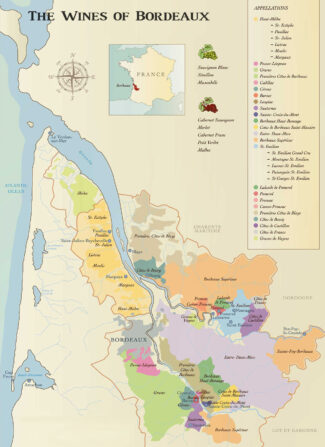
Referencing a map, Bordeaux follows the Gironde as it flows southwards from the Atlantic at Pointe de Grave towards the eponymous city. The Left Bank opens up to the appellations of Médoc and then, consecutively, Saint Estèphe, Pauillac, Saintt Julien, Listrac Médoc and Moulis-en-Médoc further inland, and Margaux—with Haut Médoc extending along half of the peninsula. At Margaux, the Gironde divides into two rivers: the Garonne flows north past the appellations of Pessac-Léognan, Cadillac, Graves, Cérons, Barsac, Loupiac, Sainte-Croix-du-Mont and Sauternes while the Dordogne heads west through Côtes de Bourg, Fronsac, Pomerol, Saint-Émilion and its ‘satellites’. In between these two rivers lies the Entre-deux-Mers, a region known for white wine. While the Left Bank of the Bordeaux wine map is home to countless extravagant châteaux, the Right Bank is generally considered more naturally beautiful with Saint-Émilion (despite its confusing classification system) and Pomerol drawing the most attraction.
The Urban Appellation: The Birth Of Pessac-Léognan
The same novice who may not grok the diversity of terroirs within Bordeaux may also admit that they are not familiar with Pessac-Léognan as a stand-alone appellation. This is understandable considering it has existed as such for only thirty-five years, although the soil beneath is the product of millions of years of geology that have deposited a harmonious mixture of ocher, white, red and pink quartz and quartzites, jaspers, flints and Lydians.
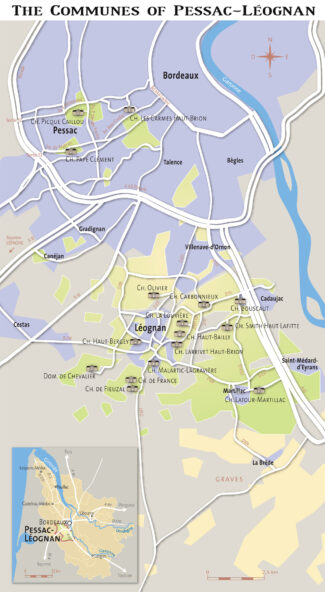
Extending over ten communes—Cadaujac, Canéjan, Gradignan, Léognan, Martillac, Mérignac, Pessac, Saint-Médard-d’Eyrans, Talence and Villenave-d’Ornon—the appellation decree was signed on September 9, 1987, marking the recognition of several unique qualities in a terroir that gave birth to the ‘New French Claret’ of Château Haut-Brion, one of the Grand Cru Classé estates in the famous 1855 valuation.
With the replanting of more than two thousand acres of vines, winegrowers have regained the Pessac-Léognan vineyard region that it had in 1935, resisting the urban expansion of the nearby city of Bordeaux.
Today, the total surface area exceeds 4000 of production, with vines and intensely urban landscapes co-existing.
The Originality of Pessac-Léognan Lies in Its Origin
That the area now specified as Pessac-Léognan is capable of producing world-class wines has been noted for centuries. The terroir is characterized by deposits of pebbles and gravel that has accumulated via the Garonne River for nearly two million years. The climate is regulated to the east by the river, which mitigates frost, and to the west by the forest, which protects vineyards from the prevailing winds and keeps the soil moist.
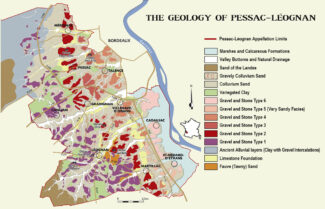
The key features of the appellation include a landscape of low rises that are sufficiently sloping to ensure good drainage, further facilitated by a network of small streams that act as natural drains feeding into the Garonne River; soils consisting of river gravel up to 25 feet deep are set on Tertiary limestone subsoil, both left behind by the river as it changed course during the Quaternary Era. These stones reflect the sun’s radiation, increasing the vines’ sun exposure and accelerating the ripening of the grapes—a combination of factors that represents Pessac-Léognan’s inimitable, inalienable heritage.
Grapes From Wrath: New Research Finds That Warm Summers and Wet Winters Yield Better Vintages in Southwest Bordeaux
Grappling with the pluses and minuses of climate change is a double serving of concern on the plate of every wine region on the planet; Pessac-Léognan is no exception.
First, what we all know to be true: Weather drives wine quality and taste. Temperature and precipitation occurring throughout the year—from bud break, while the grapes are growing and maturing, during harvesting, and even overwintering dormant vines—each play a role. The same vineyard can produce different quality levels in different years despite those wines coming from grapes grown on the same vines, on the same land, and being produced by the same methods.
With climate change upending many of the most predictable weather patterns (even among an otherwise random set of circumstances), a study done by Andrew Wood of the University of Oxford’s Department of Biology paired high-resolution climate data with annual wine critic scores from the Bordeaux wine region in southwest France from 1950 to 2020, and concluded that, “The trend, whether driven by the preferences of wine critics or the general population, is toward stronger wines that age for longer and give you richer, more intense flavor, higher sweetness, and lower acidity. And with climate change generally, we are seeing a trend across the world that with greater warming, wines are getting stronger.”
He adds: “With the predicted climates of the future, given that we are more likely to see these patterns of warmer weather and less rainfall during the summer and more rainfall during the winter, wines are likely to continue to get better. However, there is a tipping point; once water becomes more limited, if plants don’t have enough, they eventually fail. And when they fail, you lose everything.”
Pessac-Léognan’s ability to adapt and take advantage of this natural phenomenon is largely dependent on the commune in question, since each enjoys varying degrees of temperature modulation, allowing for differences in the levels of ripeness, alcohol, and picking dates. For example, Talence is warmer and there, the vineyards are picked earlier than Pessac, while Martillac harvests after Léognan. Overall, however, Pessac-Léognan is becoming increasingly warmer; 2022 saw the earliest start date for harvesting ever. 2022 was also the first vintage where some vintners requested and were able to irrigate select vines in various parcels due to the parching heat. Alice Leuret, Commercial director at Château Les Carmes Haut-Brion, indicates that irrigation permits required a mountain of paperwork, and at her estate, was restricted to five acres of young vines.
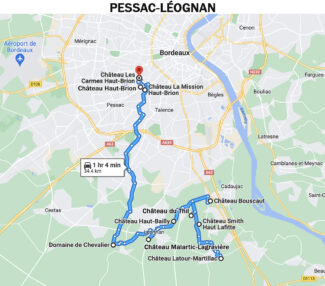
Six Top Châteaux Second Wines With a Six-Bottle Sampler Package ($298)
The tradition of ‘second’ Bordeaux wines predates Classified Growths by at least a century, and the innovation is credited to Château Margaux, who first released a wine labeled ‘2eme vin’ in the seventeenth century to indicate that the wine, while produced on the estate, came from vines considered unsuited for inclusion in the Grand Vin. In Pauillac, the first estate to make use of a second wine was Château Pichon Longueville Comtesse de Lalande, who debuted La Réserve de la Comtesse in 1874.
These Six second wines represent a cross-section of how Pessac-Léognan has approached the concept. Although the appellation is fairly new, these estates are not.
Vintage 2020 in Pessac-Léognan: ‘Show Stoppers, Intensely Concentrated’
For Pessac-Léognan, the 2020 vintage was brilliant, with perhaps a touch more variance compared to other appellations. The growing season began with an unseasonably warm winter, which transitioned into a warm but humid spring. Although the warmth and humidity ensured the region was spared the worst of the spring frosts, endless rain settled in its place. The excess water and heat meant vine growth was rapid and producers had to be vigilant in managing both the vines and the spread of disease and rot. Unsurprisingly, the warm temperatures led to both an early budburst and flowering and the crop look set to be a large one. Summer brought sizzling temperatures and dry conditions, which ultimately led to concerns with drought. Both July and August were exceedingly dry and terroir became an important factor as to which vines had easy access to water reserves deep in the soil. However, the clear weather allowed for an early harvest in September with producers able to pick at their leisure. The resulting wines were generally brilliant as the grapes had been intensely concentrated by the drought-stricken summer and, as a result, were tiny and full of flavor.
Vintage 2019 in Pessac-Léognan: ‘Sophisticated, Very Pleasant Early Drinking’
The growing season began with a mild winter that evolved into a balmy spring. However, like much of Bordeaux, the region experienced a particularly icy April, which brought a significant risk of frost to the vineyards and producers had to be vigilant to protect the vines. The month also saw heavy rains, which helped hydrate the vines in preparation for what would transpire to be a very warm, dry summer. By mid-summer, the days were hot and arid; the nights, however, fortunately, remained cool, which helped preserve important acidity and aromatics in the grapes. July also brought two heavy rainstorms, which revitalized parched vines, leading to a fine harvest with above average quality.
Château La Mission Haut-Brion
First, the mothership: Among Château Haut-Brion’s more illustrious fans, Thomas Jefferson waxed poetic about the vineyard’s terroir, noting, “The soil of Haut-Brion, which I examined in great detail, is made up of sand, in which there is near as much round gravel or small stones and very little loam like the soils of the Médoc.” Jefferson went on to create his own classification of Bordeaux and listed Château Haut-Brion as one of the region’s top four vineyards, a status that would be echoed 75 years later in the official classification of 1855, when the château became the sole first growth located outside the Médoc.
In the modern era, the estate is in the hands of Prince Robert de Luxembourg who looks after the legacy with the expertise of the Delmas family. Both families are responsible for Château la Mission Haut-Brion, which is separated from Château Haut-Brion by the old Arcachon road and a set of train tracks. Under the management of Jean-Phillipe Delmas, both labels have actually improved in quality—remarkable for wines that had already garnered such hefty laurels.
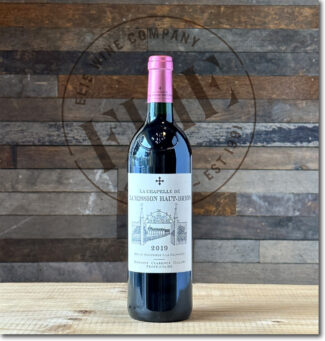 1- Château Chapelle La Mission Haut-Brion ‘La Chapelle’, 2019 Pessac-Léognan Rouge ($108)
1- Château Chapelle La Mission Haut-Brion ‘La Chapelle’, 2019 Pessac-Léognan Rouge ($108)
The second wine from this great estate is built upon 50% Merlot, 46% Cabernet Sauvignon, and the balance, Cabernet Franc. It is full-bodied and round, expansive and powerful, yet flawlessly balanced with inherent delicacy of fruit expression. Textbook notes of sweet red and black currants, tobacco leaf, exotic spice, acacia flowers and lead pencil appear in the nose and carry through to the finish.
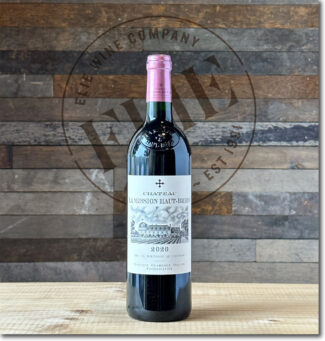 Château La Mission Haut-Brion, 2020 Pessac-Léognan Rouge ($476)
Château La Mission Haut-Brion, 2020 Pessac-Léognan Rouge ($476)
48.6% Merlot, 43.2% Cabernet Sauvignon, 8.2% Cabernet Franc; a touch of juniper enlivens an already lively palate filled with dark cherries, delicate hints of nougat, fresh orange zest and plums, showing silky tannins, finesse-rich acidity and salty minerality.
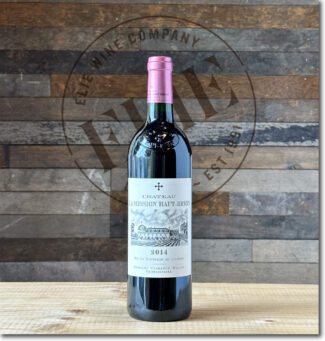 Château La Mission Haut-Brion, 2014 Pessac-Léognan Rouge ($349)
Château La Mission Haut-Brion, 2014 Pessac-Léognan Rouge ($349)
54% Merlot, 45% Cabernet Sauvignon, 1% Cabernet Franc; the wine offers an exquisite bouquet of pure black fruit, cold stone, a touch of black olive and a suggestion of boysenberry preserve. The tannins are deceptively fine, holding the structure very tightly, and having been given the decade of aging that such a wine requires, it is just beginning to drink at its optimum.
Domaine de Chevalier
Grapes may be the stock and trade of Pessac-Léognan, but as a land mass, it is mostly forest. Carved into a clearing in that forest, Domaine de Chevalier has been a mainstay of wine production in the region for hundreds of years. So much do the trees influence the wines that one of the first things Olivier Bernard did when he took over the estate (at the age of 23) in 1983 was to remove the sheltering belt that surrounded those acres most susceptible to frost.
At the time, the estate had only 44 acres of vines. Among Bernard’s other early decisions was to retain the winemaking team and enlarge the holding. In 1985, he purchased additional plots from neighboring vineyards; next, he began a long-term replanting program lasting from 1988 to 1995, including in this 17 acres of Sauvignon Blanc and Sémillon.
Today, he is joined in daily operations by his two sons Adrien and Hugo. With 65 acres under vine, divisible into 90 individual plots, the potent Pessac-Léognan terroir is built around gravel with black sand over clay and hardpan soil. There are gentle slopes and elevations throughout the parcel which rise to around 200 feet, relatively high for Bordeaux.
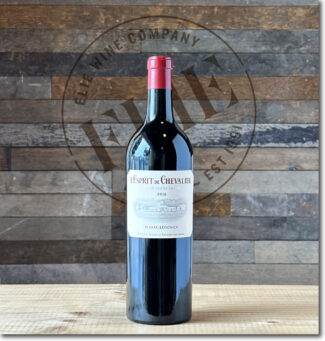 2- Domaine de Chevalier ‘L’Esprit de Chevalier’, 2019 Pessac-Léognan Rouge ($36)
2- Domaine de Chevalier ‘L’Esprit de Chevalier’, 2019 Pessac-Léognan Rouge ($36)
50% Cabernet Sauvignon, 45% Merlot, 5% Petit Verdot; it sports a mix of bramble, mulling spice and savory notes steeped in smoky blackberry and cherry compote shores up by whiffs of loamy soil.
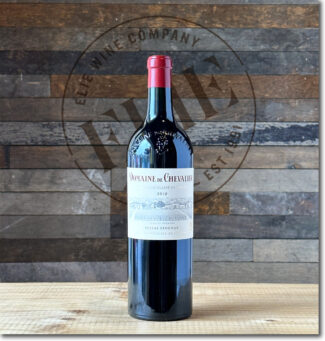 Domaine de Chevalier, 2019 Pessac-Léognan Rouge ($117)
Domaine de Chevalier, 2019 Pessac-Léognan Rouge ($117)
A blend of 65% Cabernet Sauvignon, 30% Merlot, and 5% Petit Verdot aged iin just 35% new oak, it sports a dense purple hue as well as a quintessential Graves bouquet of cassis, earth, truffle, cold ash, tobacco and graphite. Balance is flawless and the finish is long and lush.
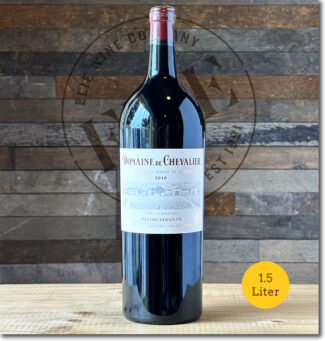 Domaine de Chevalier, 2016 Pessac-Léognan Rouge ($299) 1.5 Liter
Domaine de Chevalier, 2016 Pessac-Léognan Rouge ($299) 1.5 Liter
In 2016, spring was cool and flowering was a success; however the weather heated up over the summer with August becoming very hot and dry. The intense heat caused many of the grapes and vine foliage to suffer from heat stress and sunburn. September was dry until heavy rains fell at the end of the month and rot became a serious issue in October. Grapes picked early fared well, and are reaching peak drinkability now.
65% Cabernet Sauvignon, 30% Merlot, 5% Petit Verdot displaying a sappy core of kirsch, raspberry pâté and plum reduction; it sits on a plush, focused and elegant bed of fine and powerful tannins, giving it plenty of aging potential still to be realized.
Château Haut-Bailly
At just under 75 acres, Haut-Bailly is a moderate-sized estate that produces about 80,000 bottles per year. The grapes line up in the vineyard in an order typical for Haut-Médoc, 60% Cabernet Sauvignon, 34% Merlot, 3% Cabernet franc and 3% Petit Verdot, although it is located in the commune of Léognan, which is usually more associated with white wine production. Since being purchased in 1998 by American banker Robert G. Wilmers, Bailly has steadily improved its output and now numbers in the upper echelon of Pessac-Léognan.
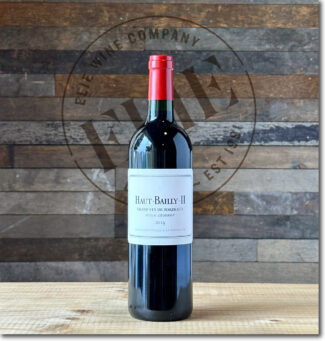 3- Château Haut-Bailly ‘Haut-Bailly II’, 2019 Pessac-Léognan Rouge ($45)
3- Château Haut-Bailly ‘Haut-Bailly II’, 2019 Pessac-Léognan Rouge ($45)
60% Merlot, 40% Cabernet Sauvignon; the second wine of Château Haut-Bailly is marked with freshness and fruit built upon a firm foundation. It shows a classic Graves scorched-earth character as well as pure red and black fruits, tobacco, and cedary herb-like aromas and flavors.
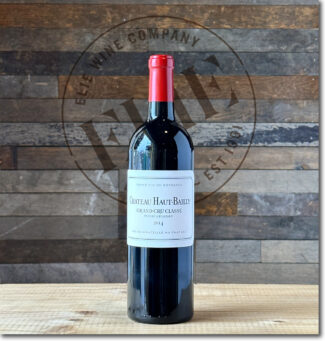 Château Haut-Bailly, 2014 Pessac-Léognan Rouge ($117)
Château Haut-Bailly, 2014 Pessac-Léognan Rouge ($117)
In 2014, the winter was extremely mild (the warmest in 10 years) but it also brought vast volumes of rain. January and February were particularly waterlogged, which created extremely humid conditions. However, despite the damp, bud break was both successful and far earlier than usual, kick starting the growing season. June delivered fantastic weather bar one devastating hailstorm, and some châteaux further north lost 80% of their crop. However, the summer quickly cooled with a damp July and an unusually chilly August. September saw a glorious Indian summer and temperatures soared, drying out the vines. A warm October gently eased the grapes to phenolic ripeness, rescuing the vintage. The harvest was leisurely and relaxed with many growers picking late to take advantage of the optimum weather.
The 2014 Haut-Bailly remains dark, sumptuous and expressive, exuding depth and finesse with ample resonance on the palate; big cassis and black cherry tinged with wood smoke, tobacco and licorice infusing a deep, creamy finish.
Château Smith Haut Lafitte
Rated as a red wine ‘Grand Cru Classé’ in the 1959 Classification of Graves, Château Smith Haut Lafitte sits on a low hill of pebbles and sand deposited by the Garonne River, offering grape vines not only superb drainage, but also reflected sunshine to lengthen the day’s ripening period. The estate is not to be confused with Château Lafite Rothschild (the Pauillac superstar) with which it has no connection, but both were named for their elevated physical status—‘la fite’ is an ancient dialectical word for hill.
 4- Château Smith Haut Lafitte ‘Le Petit Smith Haut Lafitte’, 2019 Pessac-Léognan Rouge ($54)
4- Château Smith Haut Lafitte ‘Le Petit Smith Haut Lafitte’, 2019 Pessac-Léognan Rouge ($54)
Le Petit Smith Haut Lafitte is vinified at Smith Haut Lafitte, and from vineyard to cellar, the entire winemaking goes through the exact same process as the Grand Vin. A blend of 60% Cabernet Sauvignon and 40% Merlot, the grapes are sorted twice, before and after destemming. Then the berries go through optical sorting before being gently dropped uncrushed on both wooden and stainless-steel vats for fermentation. Aged for 14 months in barrels (20% new barrels) produced in their very own in-house cooperage; Le Petit Smith Haut Lafitte 2019 is extremely fine with silky tannins and beautiful notes of blackcurrant, licorice and dark chocolate, showing great finesse and structure to suggest a lot of aging potential.
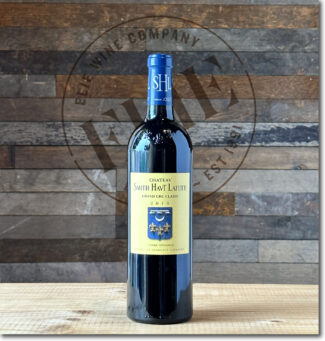 Château Smith Haut Lafitte, 2019 Pessac-Léognan Rouge ($169)
Château Smith Haut Lafitte, 2019 Pessac-Léognan Rouge ($169)
59% Cabernet Sauvignon, 36% Merlot, 4% Cabernet Franc and 1% Petit Verdot aged for 18 months in French oak barrels, 60% of which are new. The wine shows a deep, opaque purple color with soaring aromas of blackberry, currant, blueberry and cherry combined with spicy aromas of clove, vanilla and cinnamon underpinned by a flinty note. Suave on the palate with mouth-coating tannins and soft, integrated acidity.
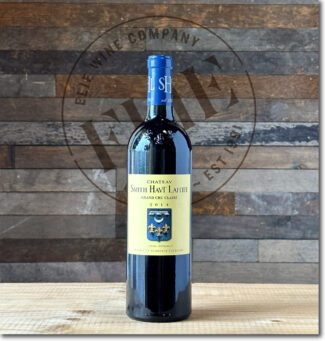 Château Smith Haut Lafitte, 2014 Pessac-Léognan Rouge ($120)
Château Smith Haut Lafitte, 2014 Pessac-Léognan Rouge ($120)
62% Cabernet Sauvignon, 30% Merlot, 6% Cabernet Franc and 2% Petit Verdot; this remains a massive wine with focused black fruit, graphite and savory herbs—age has mellowed the intensity a bit, but even tamed, it retains the dusty and earthy flavors so typical of the Graves area.
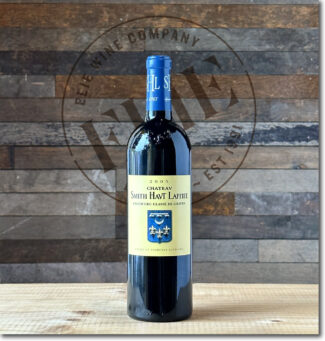 Château Smith Haut Lafitte, 2005 Pessac-Léognan Rouge ($259)
Château Smith Haut Lafitte, 2005 Pessac-Léognan Rouge ($259)
The legendary 2005 vintage is the product of a hot, dry, growing season and from start to finish. While dry, there was just enough moisture at the right times to nourish the vines. Flowering took place at the beginning of June and during the late summer months, some vines had become stressed from the drought, but the rains which fell in August came at an ideal time, averting the potential for drought. Starting in late September and continuing into October, the days were sunny and warm, with chilly night temperatures. This allowed the grapes to be harvested under picture-perfect conditions and gave the growers the opportunity to wait until the fruit achieved ideal phenolic ripeness. The combination of warm days, cold nights and just enough rain at the right moments produced extraordinary 2005 Pessac-Léognans.
A gorgeous floral nose with notes of graphite, blueberries, blackberries and cassis introduce an inky, dense, yet strikingly pure wine that manages to remain delicate despite stunning concentration and multi-layered mouthfeel. It is drinking wonderfully, but will last considerably longer under the correct storage conditions.
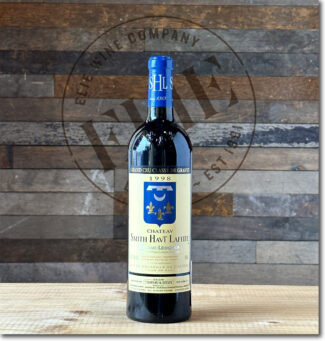 Château Smith Haut Lafitte, 1998 Pessac-Léognan Rouge ($279)
Château Smith Haut Lafitte, 1998 Pessac-Léognan Rouge ($279)
In 1998, spring was cool and flowering was a success, however the weather heated up over the summer with August becoming very hot and dry. The intense heat caused many of the grapes and vine foliage to suffer from heat stress and sunburn. September was dry until heavy rains fell at the end of the month and rot became a serious issue in October, so harvest timing was critical. Much of Graves produced average-quality wines, but in Pessac-Léognan, some of the top estate produced truly impressive wines.
The nose of Château Smith Haut Lafitte 1998 remains precise, if mature, with espresso, smoke, licorice, truffle and dark red berry scents. Herbal notes play with the fruit—thyme especially—ending with black cherries, thyme and coffee notes.
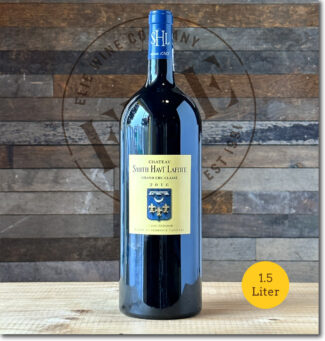 Château Smith Haut Lafitte, 2016 Pessac-Léognan Rouge ($480) 1.5 Liter
Château Smith Haut Lafitte, 2016 Pessac-Léognan Rouge ($480) 1.5 Liter
65% Cabernet Sauvignon, 30% Merlot, 4% Cabernet Franc and 1% Petit Verdot; the wine displays lush waves of cassis, cherry preserve and raspberry puree gliding through bramble, tar and notes of melted licorice. The finish features an intense echo of pastis and sweet tobacco and offers a latent grip.
Château Malartic-Lagravière
Originally Domaine de Lagravière, Château Malartic-Lagravière—situated on the finest gravel hilltop in Léognan—is one of only six estates in Bordeaux classified for both white and red wines. 100 acres are given over to red grape varieties (45% Cabernet Sauvignon, 45% Merlot, with 8% Cabernet Franc and 2% Petit Verdot) and 15 acres to whites (80% Sauvignon blanc and 20% Sémillon). The estate has belonged to the Bonnie family since 1997, originally with oenologists Michel Rolland (replaced by Eric Boissenot in 2020) and Athanase Fakorellis as consultants.
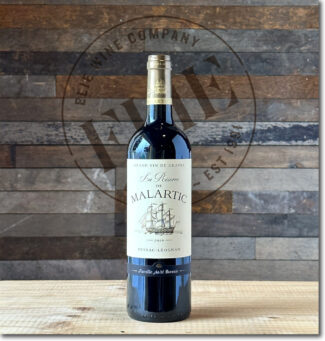 5- Château Malartic-Lagravière ‘La Réserve de Malartic’, 2019 Pessac-Léognan Rouge ($26)
5- Château Malartic-Lagravière ‘La Réserve de Malartic’, 2019 Pessac-Léognan Rouge ($26)
82.6% Merlot, 12.3% Cabernet Sauvignon, 5.1% Petit Verdot. Merlot-heavy, yet quite representative of the Malartic terroir in a second wine. It shows soft grilled caramel around the edges of plump black fruits, with beautiful extraction and great freshness throughout the palate, with currant and chocolate through to the end.
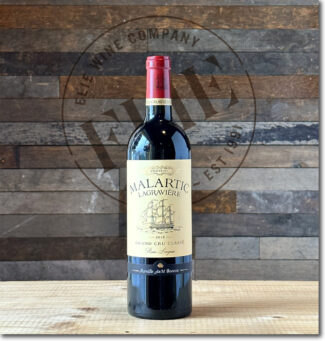 Château Malartic-Lagravière, 2019 Pessac-Léognan Rouge ($68)
Château Malartic-Lagravière, 2019 Pessac-Léognan Rouge ($68)
55.9% Cabernet Sauvignon, 41.3% Merlot, 2.8% Cabernet Franc. A wine with a particularly lovely bouquet, almost disarming with the intensity of its blackberry, briar and subtle marine scents—a whiff of brine in the background from the distant Gironde estuary. The palate shows extremely fine tannins that frame layers of raspberry and orange rind with a dab of white pepper on the afterglow.
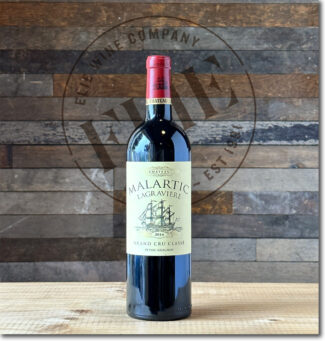 Château Malartic-Lagravière, 2014 Pessac-Léognan Rouge ($80)
Château Malartic-Lagravière, 2014 Pessac-Léognan Rouge ($80)
In 2014, The winter was extremely mild (the warmest in 10 years) but it also brought vast volumes of rain. January and February were particularly waterlogged, which created extremely humid conditions. However, despite the damp, bud break was both successful and far earlier than usual, kick starting the growing season. June delivered fantastic weather bar one devastating hailstorm, and some châteaux further north lost 80% of their crop. However, the summer quickly cooled with a damp July and an unusually chilly August. September saw a glorious Indian summer and temperatures soared, drying out the vines. A warm October gently eased the grapes to phenolic ripeness, rescuing the vintage. The harvest was leisurely and relaxed with many growers picking late to take advantage of the optimum weather.
52% Cabernet Sauvignon, 40% Merlot, 5% Cabernet Franc and 3% Petit Verdot brought up in 70% new oak. It shows a high-toned, upfront bouquet with kirsch, crushed strawberry, iodine and iris scents and a palate is rounded on the entry with supple tannin and impressive depth leading to a subtle white pepper/sage note towards the finish.
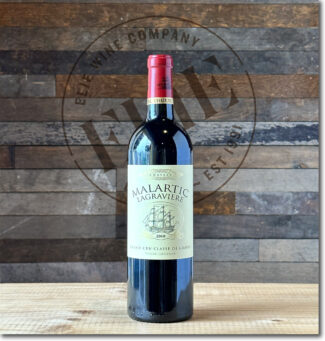 Château Malartic-Lagravière, 2010 Pessac-Léognan Rouge ($160)
Château Malartic-Lagravière, 2010 Pessac-Léognan Rouge ($160)
The 2010 vintage for Bordeaux is recognized as legendary across the board, but Pessac-Léognan in particular delivered outstanding selections. A cold winter delayed the initial vine growth, which slowed and disrupted both budburst and flowering. There were persistent problems with both millerandage and coulure, particularly among Merlot, which further cut yields. Despite a wet June giving a damp start to summer, the season soon heated up turning exceedingly hot and dry, offering the vines a nice amount of stress to concentrate flavors. the long growing season allowed the grapes to reach phenolic ripeness resulting in a highly successful vintage.
Château Malartic-Lagravière 2010 remains ripe-tasting, with edges of leather, dark polished fruit and perfumed dried flowers. The mouthfeel boasts soft silky tannins and a beautiful texture with all the structure and density of the vintage, packed with plum and black currant fruits. The acidity is almost sweet in its richness, blending easily into the dark fruit.
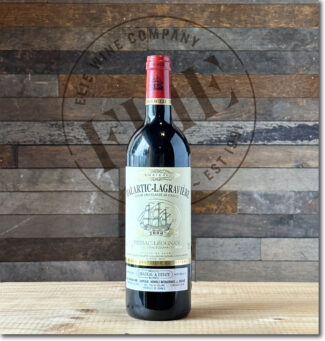 Château Malartic-Lagravière, 2000 Pessac-Léognan Rouge ($220)
Château Malartic-Lagravière, 2000 Pessac-Léognan Rouge ($220)
In 2000, the winter was mild but a warm, wet spring created a fleeting problem with mildew. However, from July onwards, a spectacular summer dominated with hardly any rain until mid-September when the heavens opened, although it was likely welcome in some areas. Sunny weather then returned for the October harvest only broken by a single day of rain, a boon to parched vines.
Big charry toasted oak shows on the nose with a deep core of cassis; on the palate Château Malartic-Lagravière, 2000 is concentrated and quite rich, with spice and pepper elements over sweet, glossy black fruits. The tannins were rich from the outset and served the wine well over the decades.
Château Carbonnieux
This is an estate with which even a casual wine drinker is probably familiar: With more than 420 acres under vine, it is easily the largest vineyard in Pessac-Léognan, and one of the largest in Bordeaux. Its wines are widely available in the United States.
In 2011, the property embarked on an extensive renovation that would allow it to vinify on a parcel-by-parcel basis. Added were temperature-controlled, stainless steel vats in a myriad of sizes (ranging from 150 hectoliters to 250 hectoliters). The whites of Chateau Carbonnieux are vinified in 25% new, French oak barrels where malolactic also takes place, as done aging for an average of 10 months before bottling.
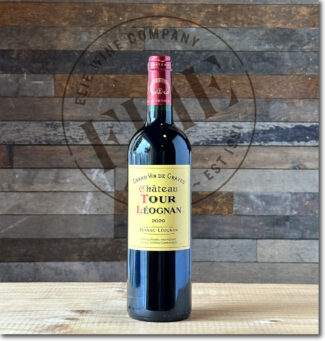 6- Château Tour Léognan, 2020 Pessac-Léognan Rouge ($29)
6- Château Tour Léognan, 2020 Pessac-Léognan Rouge ($29)
Originally a distinct estate located adjacent to Château Carbonnieux, both properties were purchased by Marc Perrin in 1956. Perrin reorganized the vineyards of both and designated Tour Léognan as the second wine of Carbonnieux. According to the winery, Château Tour Léognan is made from the younger vineyards of Château Carbonnieux (vine younger than 12 years of age). It follows the same process and deserves the same care as its bigger brother. Being drier and fruitier, the Château Tour Léognan wines can be served younger but they still reflect the rich mineral variety of the soils, so specific to the appellation.
2020 reflects the lean, sleek and focused profile of the Grand Vin, with blackberry fruit, gravel and unsweetened chocolate scents held in wonderful equilibrium. The stony middle is fruit filled, rich, poised and elegant but unfolds into a strong finish laced with mineral.
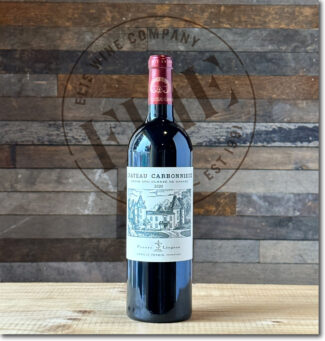 Château Carbonnieux, 2020 Pessac-Léognan Rouge ($49)
Château Carbonnieux, 2020 Pessac-Léognan Rouge ($49)
49% Cabernet Sauvignon, 45% Merlot, 4% Petit Verdot, 2% Cabernet Franc. Among the finest vintages yet produced by the estate, the nose, with its smoke, flowers, cocoa, and wet earth scents, is a standout. But on the palate, within layers of lush, silky, blackberries, plums and cocoa, the wine comes into its own as soft, supple, long and complex.
Château Latour-Martillac
The iconic tower standing at the gateway of Château Latour-Martillac (for which the property is named) is all that remains of a fortified medieval castle. began in the early 1940s when the estate was expanded in size, especially with land devoted to red wine grapes. Prior to this, close to 75% of the estate was devoted solely to the production of white wine—it was one of only six properties in Graves classified for both red and white wines. In 1955 Jean Kressman became the owner of Latour-Martillac, although he had managed it since 1940. Today, two of his sons, Tristan and Loïc, manage the château.
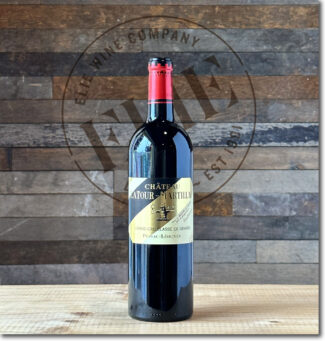 Château Latour-Martillac, 2016 Pessac Léognan Rouge ($75)
Château Latour-Martillac, 2016 Pessac Léognan Rouge ($75)
The wine is 60% Cabernet Sauvignon, 32% Merlot and 8% Petit Verdot, rather solid, with a juicy yet restrained core of dark currant and blackberry compote flavors that has unwound nicely over the years. It is embedded with a brambly grip and shows dried tobacco leaf, anise and tar notes through the finish.
Château Bouscaut
Owned by the Lucien Lurton family for 43 years, Château Bouscaut is managed today by Sophie Lurton and husband Laurent Cogombles as well as their son, Armand Cogombles.
The property—although large—consists of a single parcel of vines growing on a sloping hillside of gravel, clay and limestone.
After receiving HVE3 certification in 2018, Chateau Bouscaut began converting to 100% organic farming and were officially certified as organic with the 2023 vintage.
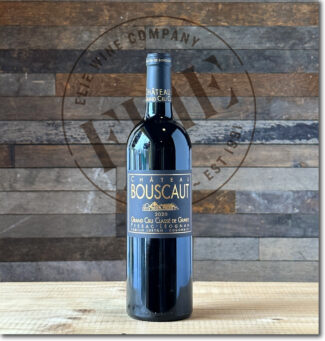 Château Bouscaut, 2020 Pessac-Léognan Rouge ($48)
Château Bouscaut, 2020 Pessac-Léognan Rouge ($48)
61% Merlot, 33% Cabernet Sauvignon, 6% Malbec: A classic Pessac-Léognan nose of pure cassis and black raspberries interwoven with notes of violets, tobacco, sous bois and ample spicy background oak enhanced, no doubt, by the Malbec. A beautifully balanced wine that will benefit from 4-5 years of bottle age and keep for 15-20 years or longer.
Château le Thil Comte Clary
Owned by Florence and Daniel Cathiard, Le Thil is located in the heart of Pessac and surrounded by the well-known estates of Châteaux Carbonnieux and Smith Haut Lafitte; Lafitte is also owned by the Cathiards. The vineyards are predominantly Merlot, planted on a superb clay-limestone slope facing due south while some Cabernet Franc is planted on the plateau portion of the estate.
Says Daniel Cathiard: “We make wine according to a unique philosophy: Bio-Précision. We are in the second year of our Organic Agriculture certification, and have added such positive-energy improvements as a CO2 recycling system into baking soda. Grapes are sorted twice, before and after destemming, and are not pressed before undergoing fermentation in vats. Tannins and color are extracted by soft punching down and a few pumping overs, then aged 14 months in barrels (30% new). Perhaps best of all, these barrels are produced in our in-house cooperage.”
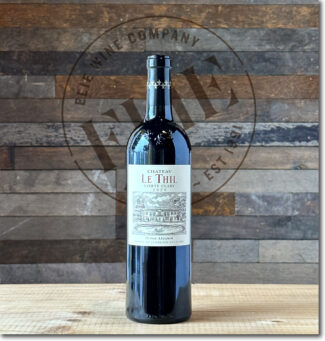 Château le Thil Comte Clary, 2020 Pessac-Léognan Rouge ($41)
Château le Thil Comte Clary, 2020 Pessac-Léognan Rouge ($41)
Wild cherry, tobacco, cedar, mint and white pepper lend notable freshness to this 2020 blend, which hails from clay-limestone slopes with southern exposure, unusual for the appellation, more typical of Saint Émilion than Pessac-Léognan. Vinification of the red takes place in temperature controlled stainless steel tanks with a 28-day maceration and is. Château Le Thil is aged for 18 months in 50% new oak barrels. The wine offers a punch of spicy Damson plum and red cherry on the opening, melting into tobacco, cedar, mint and white pepper with solid acids and lifted floral accents through the finish.
A Star Reborn:
Château Les Carmes Haut-Brion
Named after a group of friars who managed the estate from 1584 until the French Revolution in 1789 (and of course, for Château Haut-Brion), Les Carmes originated as a windmill and the surrounding land gifted by Jean de Pontac of Haut-Brion. When it was sold in 2010 for €1.54 million per acre, it represented a new record for Bordeaux vineyard land. Shortly after selling to Patrice Pichet, the vineyard of Les Carmes Haut Brion was expanded by the purchase of another fifteen acres of vines.
Pichet has continued adding to their holdings of Les Carmes; in 2012, the group made another 40-acre purchase of vines from the Briest family, the owners of Château Haut Nouchet. Patrice Pichet has said they plan to completely replant the vineyard at a much higher vine density of 10,000 vines per hectare. Initially, the young vines will be used in the production of the second wine of Les Carmes Haut Brion, Le Clos de Carmes Haut Brion, and in time, it is expected the better vines will be added to increase the quantity of the Grand Vin.
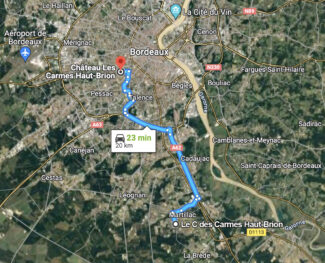
Le Clos des Carmes Haut Brion (le C, as it is called) is made from the majority of the vineyard, so it is a much larger production. The vineyard is planted to 62% Cabernet Sauvignon, 35% Merlot, and 3% Petit Verdot, emphasizing Cabernet Sauvignon more than most other second wines.
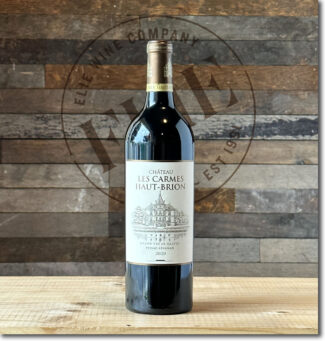 Château Les Carmes Haut-Brion, 2020 Pessac-Léognan Rouge ($235) Pre-arrival
Château Les Carmes Haut-Brion, 2020 Pessac-Léognan Rouge ($235) Pre-arrival
Full-bodied, seamless and layered, this 2020 Grand Vin is intensely flavored but weightless, with a compelling sense of harmony and a long, orange-inflected finish. A blend of 40% Cabernet Franc, 34% Cabernet Sauvignon and 26% Merlot, it was vinified with 65% whole bunch. 2020 is considered the first modern vintage from this estate in which all the elements are so well balanced. Dark red/purplish fruit, rose petal, mint, lavender, dried herbs and incense.
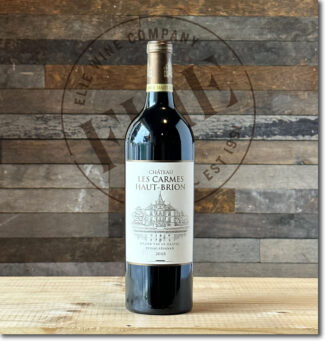 Château Les Carmes Haut-Brion, 2018 Pessac-Léognan Rouge ($265) Pre-arrival
Château Les Carmes Haut-Brion, 2018 Pessac-Léognan Rouge ($265) Pre-arrival
In 2018, The growing season began with a benign winter, which quickly shifted to a turbulent and relentlessly wet spring. The weather oscillated between heavy rains and violent bouts of hail, which brought a myriad of problems, ranging from rot and diseases. In particular, the problems created by mildew were extensive and exhausting to deal with especially for producers whose organic certifications prevented them from using sprays or other such preventative measures. Fortunately, however, a hot arid summer came into play, which helped dry out the vines and free them of disease. Overall, the 2018 vintage for Pessac-Léognan was very good and some exceptional wines were made.
37% Cabernet Franc, 34% Cabernet Sauvignon, and 29% Merlot; this is, according to Jeb Dunnuck, a 100 point wine, juicy with cassis, cherry preserves and raspberry.
Second Wine Rethought: Le C des Carmes Haut-Brion
Considered less a ‘second wine’ and more ‘another featured wine’, Château Les Carmes Haut-Brion, Le C (short for ‘Les Clos’) relies on a more traditional blend that focuses on Cabernet Sauvignon subtly complemented by Merlot. It is made in a separate winery about a half an hour from where in the Grand Vin is made in Pessac.
“The fruit is in the spotlight, and consumed young, the wine develops a crisp intensity which will gain the patina of beautiful complexity as the years pass,” says Alice Leuret, Commercial director at Château Les Carmes Haut-Brion.
The estate has 12 acres under vine, with an overall grape variety distribution of 50% Merlot, 40% Cabernet Franc and 10% Cabernet Sauvignon. Much of the vines used were previously part of Châteaux Le Thill and Haut Nouchet.
The annual production of the red Grand Vin of Château Les Carmes Haut-Brion is approximately 4,000 cases.
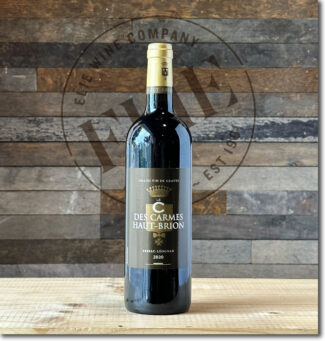 Château Les Carmes Haut-Brion ‘Le C des Carmes Haut-Brion’, 2020 Pessac-Léognan Rouge ($48) Pre-arrival
Château Les Carmes Haut-Brion ‘Le C des Carmes Haut-Brion’, 2020 Pessac-Léognan Rouge ($48) Pre-arrival
60% Cabernet Sauvignon, 39% Merlot, 1% Petit Verdot (with an average age of 15 years) ; a remarkably assertive percentage of Cab Sauv creates a wine that shows an oceanic edge with nuances of sea salt minerality beneath notes of flowers, tobacco leaves, thyme, red and black currant, mint, and an array of spices, finishing with cocoa and espresso.
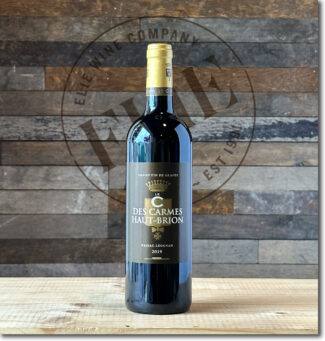 Château Les Carmes Haut-Brion ‘Le C des Carmes Haut-Brion’, 2019 Pessac-Léognan Rouge ($48) Pre-arrival
Château Les Carmes Haut-Brion ‘Le C des Carmes Haut-Brion’, 2019 Pessac-Léognan Rouge ($48) Pre-arrival
Again, a focus on Cab Sauv makes for a wine filled with smoky, dark red and black fruits, licorice, herbs, wet earth, cigar box, forest leaf, and salty, crushed rocks on the finish.
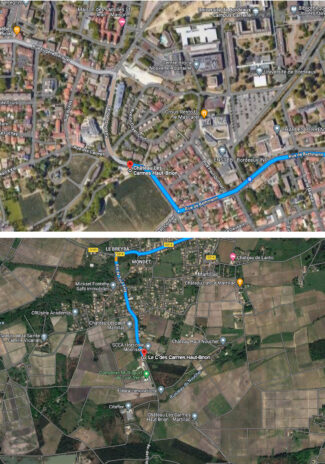
- - -
Posted on 2023.10.26 in Pessac-Léognan, Graves, France, Bordeaux
Featured Wines
- Notebook: A’Boudt Town
- Saturday Sips Wines
- Saturday Sips Review Club
- The Champagne Society
- Wine-Aid Packages
Wine Regions
Grape Varieties
Aglianico, Albarino, Albarín Blanco, Albarín Tinto, Albillo, Aleatico, Arbanne, Aubun, Barbarossa, barbera, Beaune, Biancu Gentile, bourboulenc, Cabernet Franc, Cabernet Sauvignon, Caino, Caladoc, Calvi, Carcajolu-Neru, Carignan, Chablis, Chardonnay, Chasselas, Clairette, Corvina, Cot, Counoise, Erbamat, Ferrol, Fiano, Frappato, Friulano, Fromenteau, Fumin, Garnacha, Gewurztraminer, Godello, Graciano, Grenache, Grolleau, Groppello, Juan Garcia, Lambrusco, Loureira, Macabeo, Macabou, Malvasia, Malvasia Nera, Marsanne, Marselan, Marzemino, Melon de Bourgogne, Merlot, Mondeuse, Montanaccia, Montepulciano, Morescola, Morescono, Moscatell, Muscadelle, Muscat, Natural, Nero d'Avola, Parellada, Patrimonio, Petit Meslier, Petit Verdot, Pineau d'Aunis, Pinot Auxerrois, Pinot Blanc, Pinot Gris, Pinot Meunier, Pinot Noir, Poulsard, Prieto Picudo, Rondinella, Rousanne, Roussanne, Sangiovese, Sauvignon Blanc, Savignin, Semillon, Souson, Sparkling, Sumoll, Sylvaner, Syrah, Tannat, Tempranillo, Trebbiano, Trebbiano Valtenesi, Treixadura, Trousseau, Ugni Blanc, vaccarèse, Verdicchio, Vermentino, Viognier, Viura, Xarel-loWines & Events by Date
- April 2024
- March 2024
- February 2024
- January 2024
- December 2023
- November 2023
- October 2023
- September 2023
- August 2023
- July 2023
- June 2023
- May 2023
- April 2023
- March 2023
- February 2023
- January 2023
- December 2022
- November 2022
- October 2022
- September 2022
- August 2022
- July 2022
- June 2022
- May 2022
- April 2022
- March 2022
- February 2022
- January 2022
- December 2021
- November 2021
- October 2021
- September 2021
- August 2021
- July 2021
- June 2021
- May 2021
- April 2021
- March 2021
- February 2021
- January 2021
- December 2020
- November 2020
- October 2020
- September 2020
- August 2020
- July 2020
- June 2020
- May 2020
- April 2020
- March 2020
- February 2020
- January 2020
- December 2019
- November 2019
- October 2019
- September 2019
- August 2019
- July 2019
- June 2019
- May 2019
- April 2019
- March 2019
- February 2019
- January 2019
- December 2018
- November 2018
- October 2018
- September 2018
- August 2018
- July 2018
- June 2018
- May 2018
- April 2018
- March 2018
- February 2018
- January 2018
- December 2017
- November 2017
- October 2017
- September 2017
- August 2017
- July 2017
- June 2017
- May 2017
- April 2017
- March 2017
- February 2017
- January 2017
- December 2016
- November 2016
- October 2016
- September 2016
- August 2016
- July 2016
- June 2016
- May 2016
- April 2016
- March 2016
- February 2016
- January 2016
- December 2015
- November 2015
- October 2015
- September 2015
- August 2015
- July 2015
- June 2015
- May 2015
- April 2015
- March 2015
- February 2015
- January 2015
- December 2014
- November 2014
- October 2014
- September 2014
- August 2014
- July 2014
- June 2014
- April 2014
- March 2014
- February 2014
- January 2014
- December 2013
- November 2013
- October 2013
- September 2013
- August 2013
- July 2013
- June 2013
- May 2013
- April 2013
- March 2013
- February 2013
- January 2013
- December 2012
- November 2012
- October 2012
- February 2004
Search



